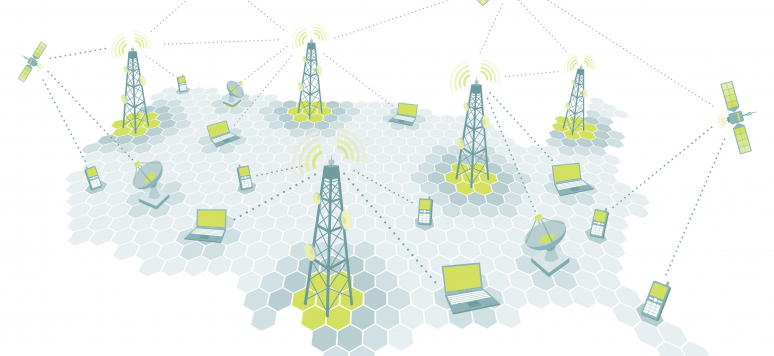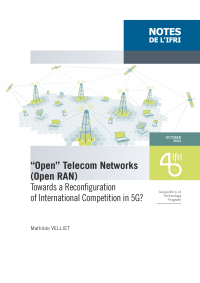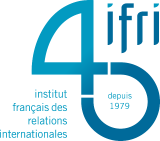
“Open” Telecom Networks (Open RAN): Towards a Reconfiguration of International Competition in 5G? Notes de l'Ifri, October 2022
In line with the anti-Huawei diplomatic campaign of the Trump and Biden administrations, the United States has promoted an alternative: Open RAN, a concept defined by "open" network architectures. At the intersection of 5G geopolitics and standards, what risks and opportunities does Open RAN present for European technological sovereignty?

The Radio Access Network (RAN) is the radio part of a mobile telecommunications system that enables the connection between a mobile device (such as a phone or computer) and the core network. While traditionally a single vendor (such as Huawei, Ericsson, or Nokia) provides a “proprietary” or “closed” solution for this part of the network, Open RAN (Open Radio Access Network) is a concept describing disaggregated architectures that divide the RAN into several bricks connected by open interfaces. The objective is to allow the operator to buy these hardware and software bricks from various suppliers, and to choose freely the most suitable option for each part. In the current context of a concentrated 5G market, dominated by three major manufacturers and even facing the risk of an Ericsson-Nokia duopoly with the exclusion of Huawei from many countries, telecom operators emphasize the flexibility and diversification of suppliers allowed by Open RAN, which would allow both more innovation and cost reduction. In line with its diplomatic campaign against “unreliable” Chinese suppliers, the United States has actively promoted Open RAN as an alternative.
However, Open RAN seems far from being a panacea for Europe: in addition to the difficulties that remain in terms of maturity, security, performance and transparency of the specification process, it risks increasing European dependence on foreign suppliers. Although Huawei is not part of the international bodies working on Open RAN (such as the Telecom Infra Project or the O-RAN Alliance), many companies close to the Chinese political and military authorities are. Beyond the question of supplier security, American lobbying is linked to the commercial opportunity that Open RAN represents for American companies, currently leaders in the cloud, software and generic hardware components…even though they do not have a major 5G champion. Open RAN is therefore an issue at the crossroads of the geopolitics of 5G and standards, to which the European Union is beginning to provide a common political and analytical response, despite the diversity of positions among member states.
This paper is available in two languages:


